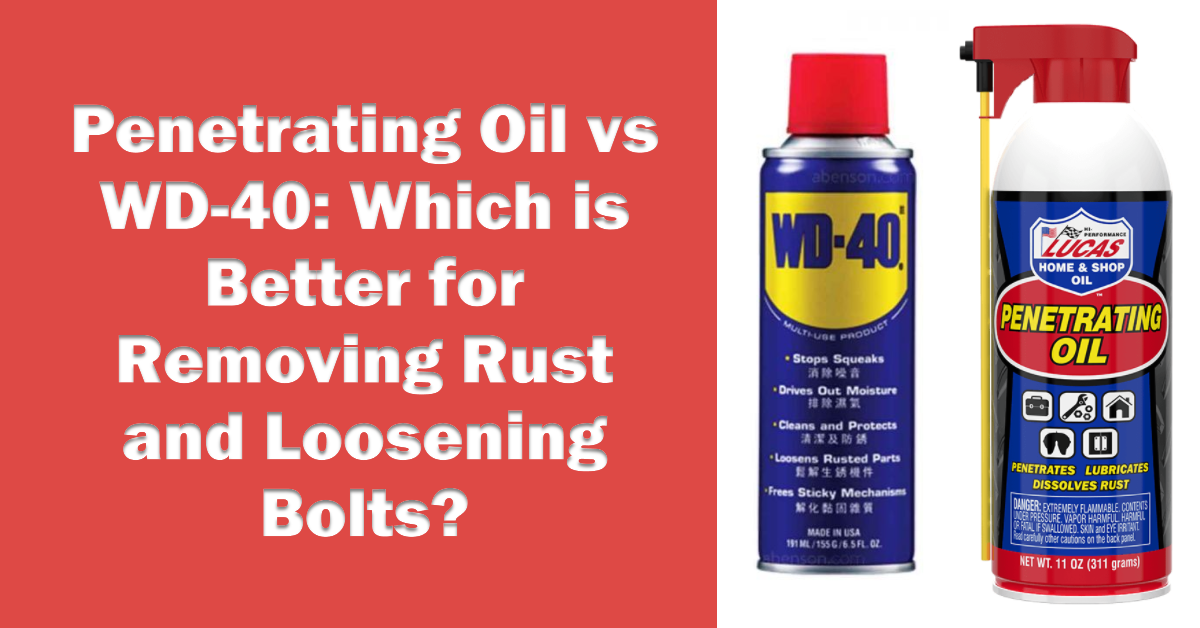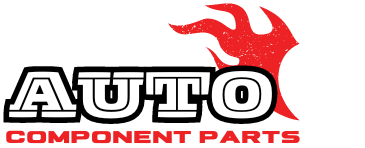Rusty bolts, stuck hinges, and seized parts are the nemesis of mechanics and DIYers alike. No matter how much elbow grease you apply, corroded nuts and bolts refuse to budge. Parts jammed from moisture or gunk fail to move freely. When this corrosion and sticking happens, you need products with serious penetrating power to break through the bonds of rust.
Two of the most reached-for solutions for stuck hardware are penetrating oils and WD-40. But what exactly are these magical rust-releasing potions? How do they work to free parts where wrenches can’t turn a bolt? When should you choose one over the other? This comprehensive guide will unlock all the mysteries around penetrating oils and WD-40 to make you a corrosion-fighting master.
1. What is Penetrating Oil?
Penetrating oils, sometimes called penetrants, are lubricants uniquely formulated to loosen frozen or severely rusted fasteners and parts. Ordinary oils like motor oil may offer some lubrication, but they can’t deeply infiltrate microscopic gaps like penetrating oils.
The key is the chemical formulation. Most penetrating oils use a base carrier fluid like mineral oil or kerosene to allow good flow and coverage. Solvent additives like acetone, toluene, or naptha give penetrating oils their biting, rust-cracking power. The solvents act like micro-sledgehammers to physically break the bonds of rust buildup through chemistry.
Thickeners provide viscosity for the oil to cling to overhead or vertical surfaces rather than drip off. Corrosion inhibitors prevent the newly exposed bare metal from flash rusting after application.
When applied to a seized connection, the oil uses capillary action to seep into imperfections in the rust layer. Over several minutes to hours, the solvents go to work breaking the rust’s hold. At the same time, lubricants like molybdenum disulfide slide in between parts to ease their separation.
When to Use Penetrating Oils
The key advantage of penetrating oils is their ability to free extremely stuck, rusted, or seized hardware. Here are some of the most common applications:
- Freeing corroded, rounded, or frozen nuts, bolts, screws, clamps, fittings and other fasteners
- Loosening stuck door hinges, garage door cables and springs, pulleys, chains, and other moving parts
- Removing corroded bearings from their metal housings
- Freeing jammed and stuck machine parts like hydraulic cylinder pistons, valve spools, splined shafts, and seals
- Releasing parts hopelessly rusted in place like tub drain mechanisms, padlocks, trailer hitches, mufflers, welded joints and more
- Lubricating and preventing rust in precision mechanisms like guns, fishing reels, bike chains, mortise locks, surgical tools, etc.
If you’ve exhausted all other options like properly fitting wrenches, propane torches, and elbow grease, a penetrating oil is your next best bet for freeing stuck parts nondestructively. They’re also great for preventively treating rust-prone hardware to prevent seizing in the future.
2. What is WD-40?
With its iconic blue and yellow can found everywhere from home workshops to factories, WD-40 is one of the most ubiquitous maintenance products ever made. But what exactly is this miracle spray?
WD-40 stands for “Water Displacement, 40th formula”. It was developed in 1953 by the Rocket Chemical Company to protect the outer skin of the Atlas missile from rust and corrosion. The spray prevented damage to the missiles during transport and storage.
The success of the 40th iteration led the company to market WD-40 commercially as an all-purpose problem-solver for industry and consumers. They have guarded its formulation as a trade secret ever since.
While the exact formula remains proprietary, WD-40 is known to contain petroleum base oils and solvents like mineral spirits along with anti-corrosion additives. It also contains compounds for displacing water and a lightweight lubricating oil.
The thin, low-viscosity carrier spray allows rapid penetration into spaces while delivering the internal ingredients to dissolve grease, lubricate, and displace moisture. The propellant evaporates quickly while leaving behind a protective lubricating film.
When to Use WD-40?
Given its ability to lubricate, penetrate, protect, and clean, WD-40 has amassed over 2000 uses. Here are some of the most common:
- Protecting tools, equipment, and metal parts from rust and corrosion
- Displacing moisture on electrical systems and connections susceptible to shorts
- Removing dirt, grease, and grime from various surfaces like engines, tools, doors, windows, etc.
- Preventing squeaking and squealing in hinges, brakes, belts, garage doors, and any moving joints
- Lubricating moving parts like rollers, casters, latches, chains, gears, and sliding mechanisms
- Freeing stuck bolts, nuts, screws, zippers, valves, clamps, and other jammed items
- Displacing moisture in spark plugs, lighters, door locks, distributors, cameras
- Silencing creaky doors, loose screws, fences, swings, and furniture
The upshot is that WD-40 is an extremely handy product for general home, shop, auto, and industrial use. It’s not designed as a heavy-duty rust penetrant but excels as a lighter lubricant, protectant, and water/dirt displacer.
WD-40 vs Penetrating Oil: Which Performs Better?
Now that we’ve broken down the differences between these two chemical wonders, when should you choose one over the other?
For seriously stuck hardware that wrenches and muscle power can’t budge, a true penetrating oil is your best bet. The deeper-penetrating formulas have more solvents and lubricants to break the strongest rust bonds.
WD-40 works well on surface-level rust and corrosion. The light oil also makes it a better choice for delicate mechanisms that you don’t want to soak in thick oils.
If moisture presence is the culprit, WD-40 reigns supreme for displacing water and preventing flash rusting. A WD-40 soak can often free parts seized solely by moisture.
For long-term lubrication and corrosion prevention, most penetrating oils win out over WD-40. But WD-40 offers a wider array of uses beyond penetrant abilities.
In summary, for the most demanding stuck hardware jobs, grab a penetrating oil. To quickly treat superficial rust or keep things creak-free, reach for the WD-40. With both these rust-fighting potions in your tool kit, you’ll be ready to take on any stuck part chore.
Final Words
Frozen, paint-welded hardware and corrosion can transform even simple repairs into a nightmare. While sweat, determination, and choice words may sometimes break bolts free, penetrating oils and WD-40 offer the chemical muscle to effortlessly defeat rust.
Understanding when to apply purpose-made penetrating oils versus versatile WD-40 is half the battle. Penetrating oils are designed to crawl into the tiniest crevices and break apart the most severe oxidation. WD-40 may handle surface-level jobs but can’t match true penetrants for freeing bonded metal.
With the knowledge of when and how to use these products, you’ll banish rust and protect parts for the long haul. Seized bolts and stuck parts will no longer impede your work. You’ll keep equipment safely operable and extend the life of all things mechanical. So don’t live in fear of flash rusting and corrosion; instead, master it with chemistry thanks to penetrating oils and WD-40.


